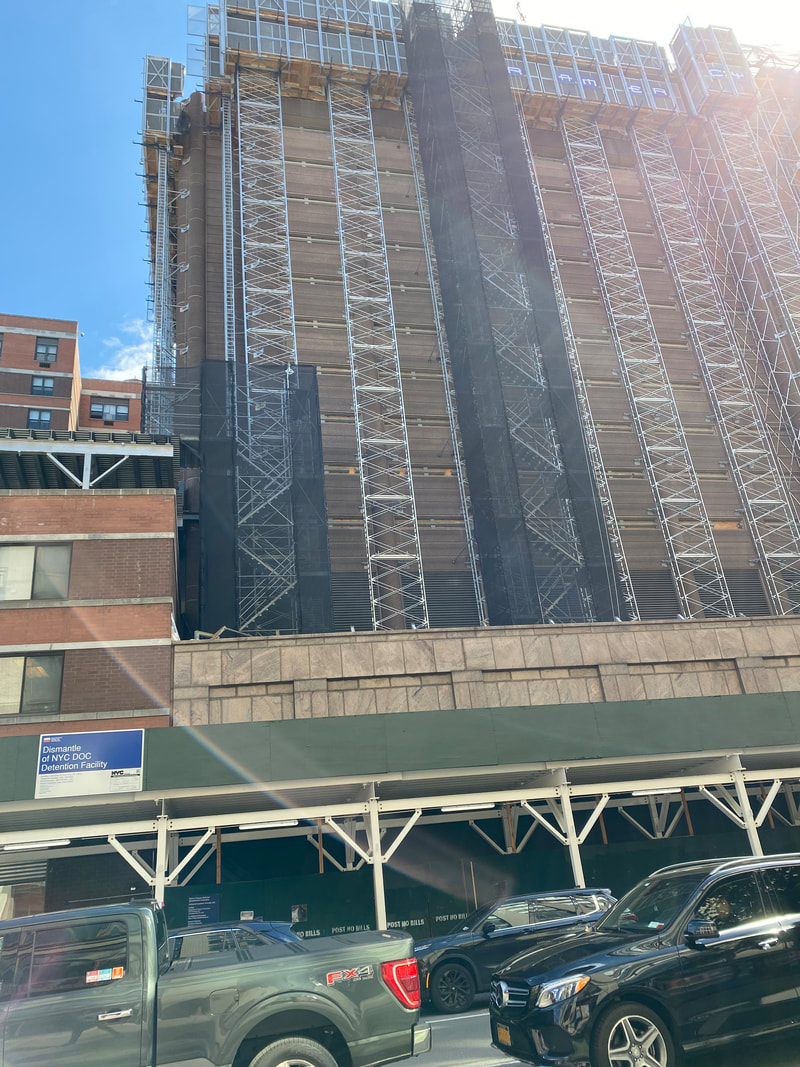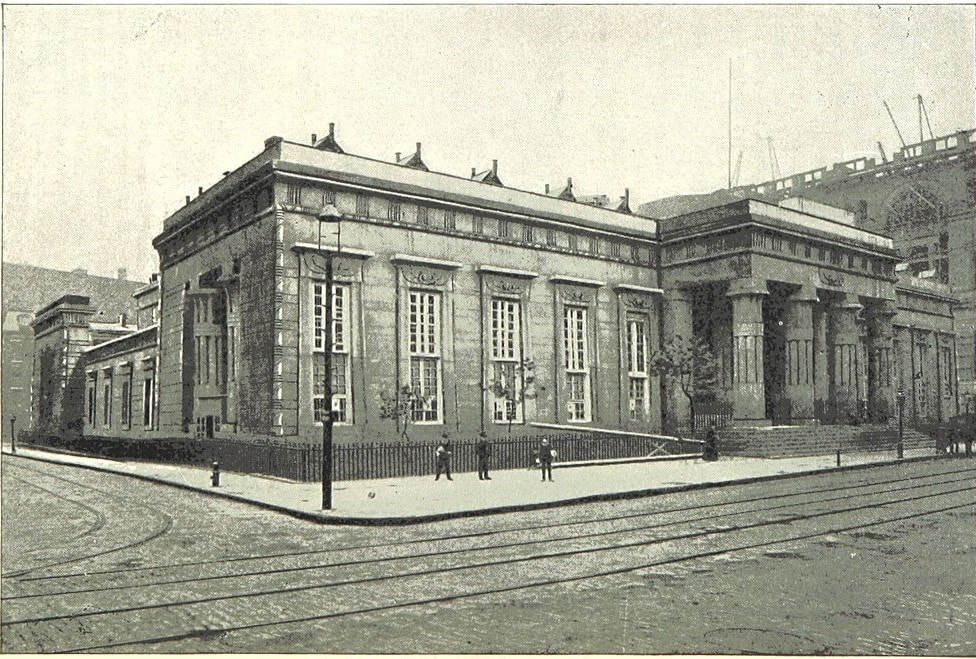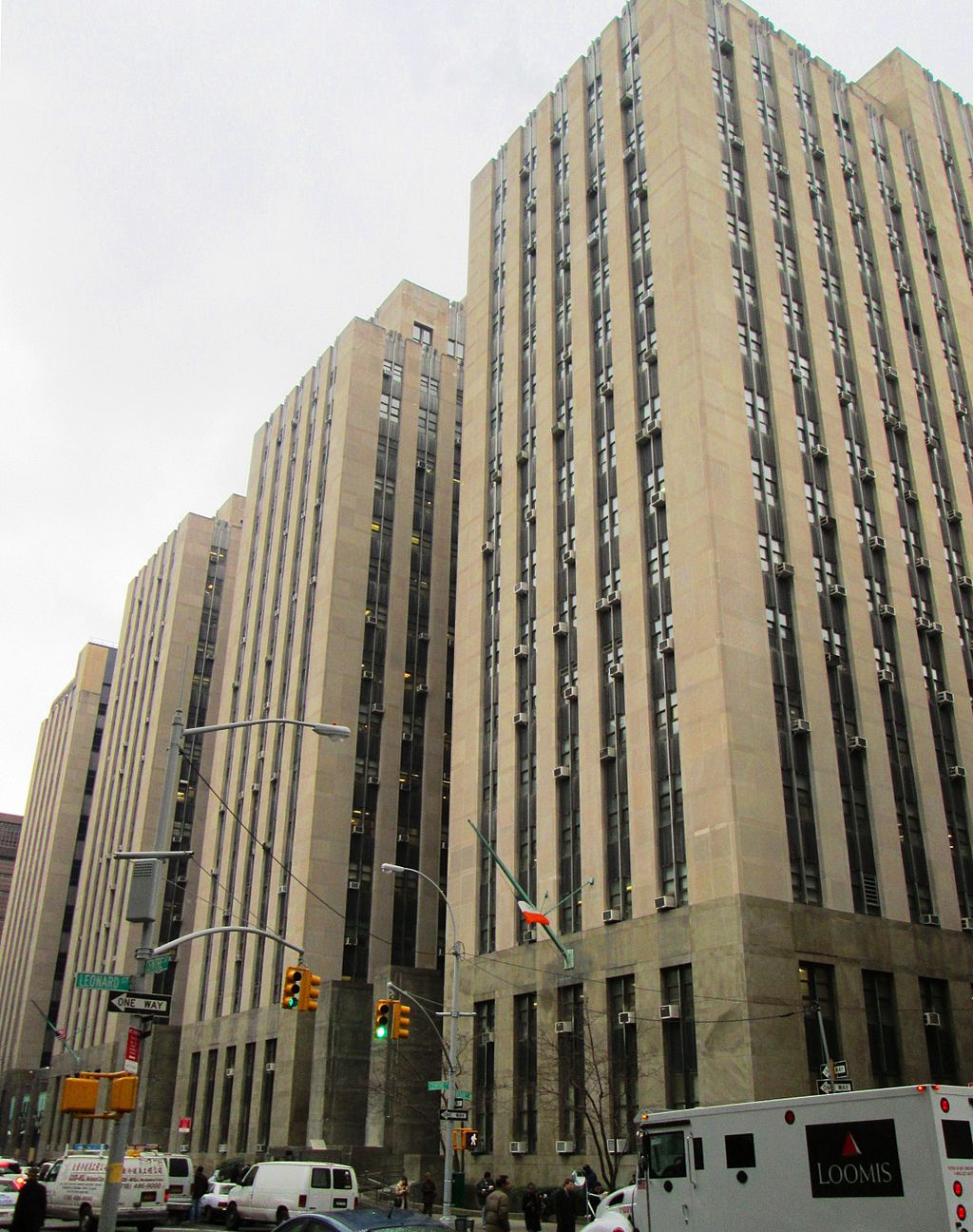|
By Laurie Lewis Were it not for the headlines about deaths at the jail complex on Rikers Island---nine so far this year, nineteen in 2022---most New Yorkers would not think much about the city’s prison system. The average citizen does become aware of the penal system, however, when serving on jury duty in Manhattan, as I am now. Every day on my way to and from court, I pass several blocks of scaffolding protecting pedestrians during the dismantling of the jail known as The Tombs. What is coming down is the latest in a series of prisons in the same general location in Lower Manhattan, between Chinatown and Tribeca. The Centre Street jail being taken down When the city was young, water---not buildings---dominated the area. It was home to the Collect Pond, a water body so large that it was the scene of John Fitch’s steamboat demonstration in 1796. Today, the one-acre Collect Pond Park lies across from the demolition site and pays homage to the early topography of the area. John Fitch's steamboat demonstration on the Collect Pond, 1796 Just a few years after the steamboat demonstration, the city took action to address two major problems: pollution of the Collect Pond and a burgeoning population in need of housing. The pond was drained and the basin filled with debris. Buildings rose on the new land. But the landfill wasn’t stable, a situation made worse by the continued flow of the natural water source that had supplied the Collect. Most of the buildings were housing in the slum known as Five Points. One building, however, was massive: a prison that opened in 1838. The original Tombs, built in 1838, across Centre Street from the present jail (under demolition) and courthouse The prison resembled an Egyptian mausoleum, which is why it was dubbed The Tombs. Like the smaller buildings erected on the landfill in what had once been the Collect Pond, the structure was unstable. The floors and walls began to warp, and water seeped in through the cracks. Inmates, many of whom had not yet been found guilty but were simply awaiting trial, often became sick living in the damp, putrid conditions. Built for 300 prisoners, the jail quickly became overcrowded. Around the turn of the century, the Egyptian-style prison was replaced by another building. Although the new jail didn’t physically resemble the old one in any way, it too was called The Tombs. Like the original Tombs, the second prison with this name soon became too small to house all of New York City’s miscreants. In 1942, a new jail and courthouse, in Art Deco style, opened across Centre Street. These are the structures that have dominated the area ever since---with an addition. The four-tower court and jail complex opened in 1942. The jail is the tower on the left in this picture. The jail in the Art Deco complex, also nicknamed The Tombs, was the northernmost of four fifteen-story towers; courts and city offices are in the other three towers (they are not being demolished). Designed for 925 prisoners, this detention facility housed about 2,000 by 1970. The conditions there were so bad that a federal judge ruled they violated inmates’ constitutional rights, and the facility was closed in late 1974. It reopened nine years later after extensive remodeling. Meanwhile, plans were underway to build a new detention center just north of the Art Deco structure. The 1990 addition to the jail. It is currently being dismantled. The addition to the jail opened in 1990. The total capacity of this building and the remodeled jail beside it was a bit less than that of the original 1940s facility. Usually, prisoners stayed there for only a short time, until their first court appearance, and then were either released or transferred to Rikers Island. The two buildings formed what was officially called the Manhattan Detention Complex but was known as---you guessed it---The Tombs. Just as the nickname stuck, so did the deplorable conditions of previous jails. The proposed solution was also the same: build a new, larger prison on the same site. It will be part of a multi-borough prison system to replace Rikers Island. After start-and-stop attempts to demolish the Manhattan Detention Complex, work is proceeding---as jurors like me can attest. Want a Gift for Someone Who Loves New York? You can't go wrong with New York City Firsts: Big Apple Innovations That Changed the Nation and the World by Laurie Lewis. The book tells about more than 300 New York originals, like the safety pin, the Oreo, and the rock musical. New York City Firsts was selected as a finalist in the 19th annual Best Book Awards sponsored by American Book Fest. Find out more about the book, including links to buy it, at www.nycfirsts.com. Tours We are no longer scheduling public tours that are open to anyone, but we are available for private tours. If you would like ideas for private tours, please see the Tours page of this website. |
Archives
April 2024
|







